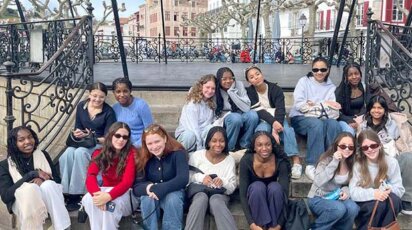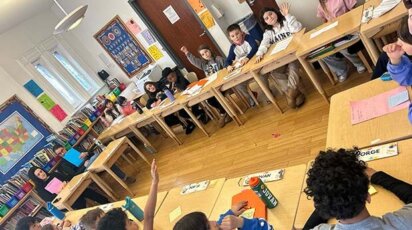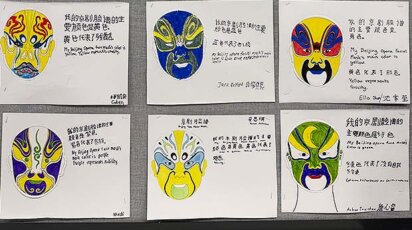News
An Inside Look at Poly’s Democracy and Disinformation Class

Should Democracy and Disinformation be a mandatory course for high school students to take?
by Lola Carss ’26, Contributing Writer, for The Polygon
Democracy and Disinformation is a single-semester computer science course at Poly Prep Country Day School. This course covers disinformation across several different countries and time periods within politics. Computer and Information Science Department Chair Jean Belford P’24, ’30 developed this class three years ago and is its only teacher.
Belford said she created this course with the intention of exposing students to “the role of social media in democracies around the world and the tampering of democracies in elections.”
For the first half of the semester, students learn about disinformation in China, the former USSR, and Iran throughout the Cold War. The class then transitions into the digital age. Using this historical foundation they learn how purposeful disinformation has been, and continues to be, in politics. The second half of the semester is spent on present day issues in the media; therefore, depending on what is currently happening when one is taking the course, the content may vary.
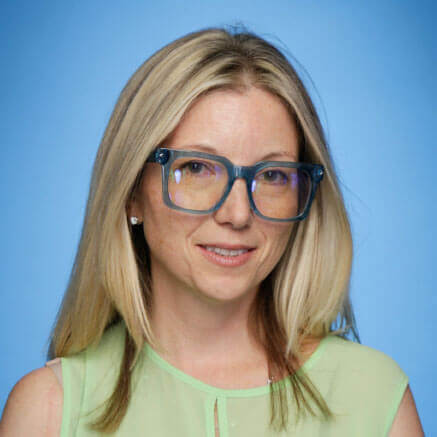
Beyond teaching students about historical and present day disinformation, the class dives into how to detect disinformation in everyday life. When describing this objective Belford said, “we talk about how to question. We go into ways to decide whether a website is credible, how to look back on the history of a website, how to question social media posts, etc.”
One major goal of the course is that students will apply the skills they have learned to their daily lives. Belford shares one specific skill students will learn: how to question social media posts. “That first impression where there is someone questioning it goes so much further, and that is just one personal way of stopping disinformation.” She pointed out that people need to start questioning social media posts more because if someone sees their peers taking the initiative they are more likely to as well.
This course also goes into artificial intelligence (A.I). and the power it is gaining. Belford said when the course first began, A.I. was not as prevalent as it is now and there was no reason to cover it throughout the semester. However, the use of A.I. is quickly growing and adapting, compelling Belford to fully fold it into the curriculum. The scariest part, according to Belford, is that anyone can use it to spread disinformation. It is important for students to be made aware of its power and know how to properly use it. Belford explains that A.I. may be a positive and helpful resource, however it may be used for negative purposes like spreading disinformation.
This course seeks to prove to students that disinformation is not random or coincidental but that there “are state and government sponsored disinformation campaigns that have a very long history and very clear playbook,” said Belford. Teaching students that they must be careful with what information they internalize as truth because governments and big world powers have already calculated their every move.
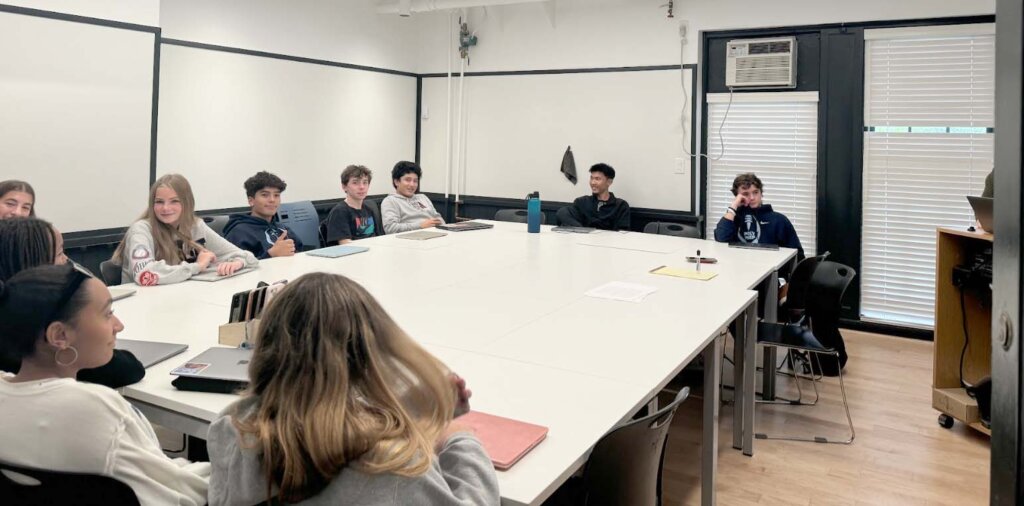
Lila Daniels ’26 took the Democracy and Disinformation class during the spring semester of the 2023-2024 school year. “It’s one of my favorite classes because I feel like there is so much media and information about democracy, and I think that Ms. Belford has done a really good job of picking what’s important.”
“We talk about how to question. We go into ways to decide whether a website is credible, how to look back on the history of a website, how to question social media posts, etc.”
— Jean Belford
Sienna Klauss ’26 has not taken the course, but given her understanding of it, she believes it should be mandatory. “Especially in our society today, there is a lot of exposure on social media to A.I. and fake information. Making sure that you’re able to differentiate what is fake and what is real is important, especially with A.I.”
This course teaches students not only [to think critically] about information they are exposed to but skills they need to do so as well. When scrolling on social media everyone is exposed to true and false information, and being able to differentiate between the two is necessary. Virginia Dillon, History Department Chair, brought up the idea that combatting disinformation on social media is as difficult for teachers as much as it is for students. She believes in this day and age, people use TikTok, Instagram, and Twitter as places to unwind but that can be very dangerous. Dillon gives an example of what may go through one’s mind when scrolling through social media: “Sometimes I look at a thing and I don’t trust it or I’m unsure and I do the extra work. A lot of times [I don’t do that work] because I’m feeling like I want to be a passive receptor of information right now.”

Lulit Adefris-Yaxley ’26 said she learned several different ways to verify and fact check information that she might be exposed to in her daily life. However, she noted that she would only use these skills sometimes, specifically when she is “interested in the information that’s being shared.” This is a common experience among many students because it is challenging to do the extra work in checking if a source is reliable on TikTok while you’re just trying to unwind after a long day at school.
The question remains: should Democracy and Disinformation be a mandatory course for high school students to take?
Note: This article was originally published in The Polygon‘s October 2024 Special Edition issue.

